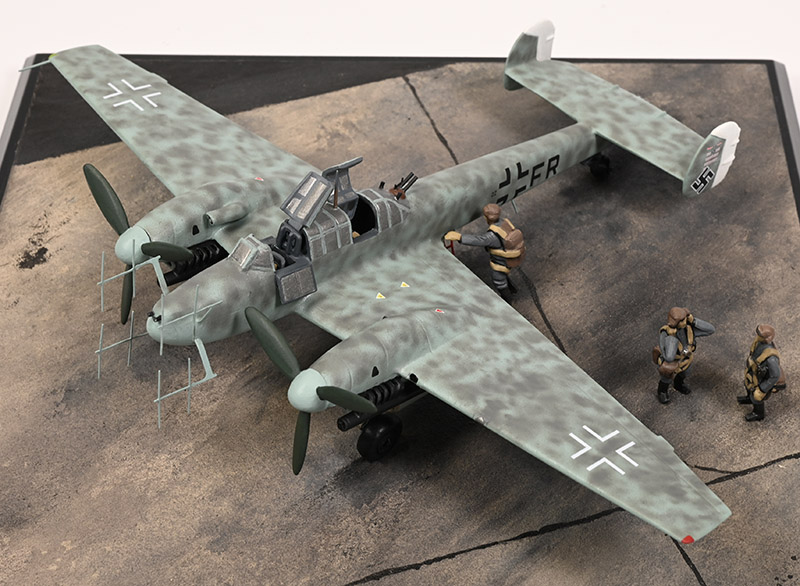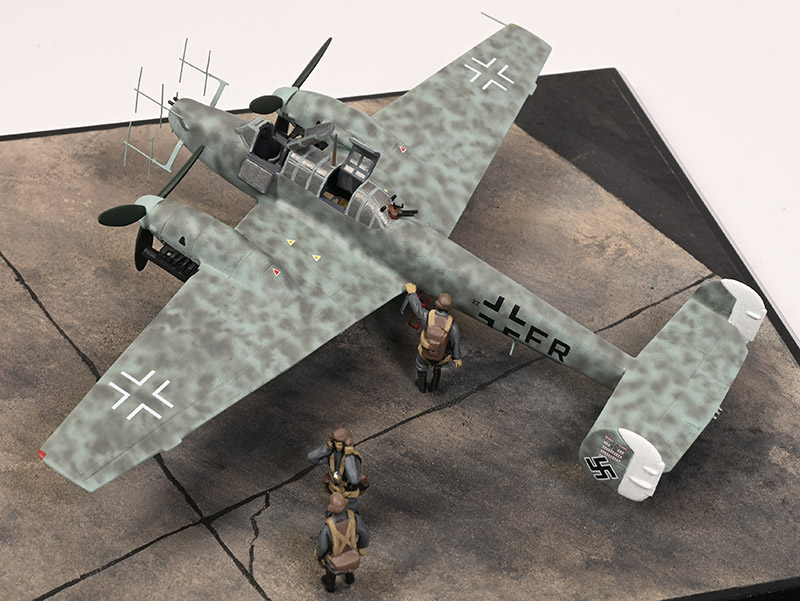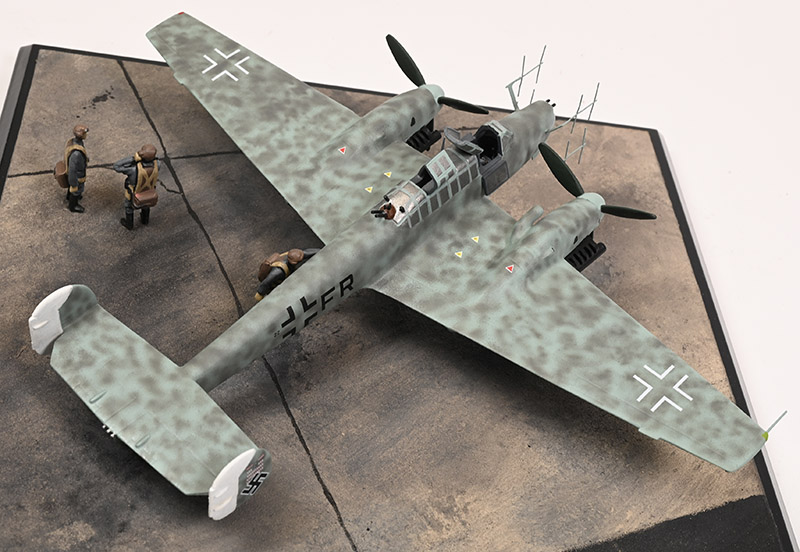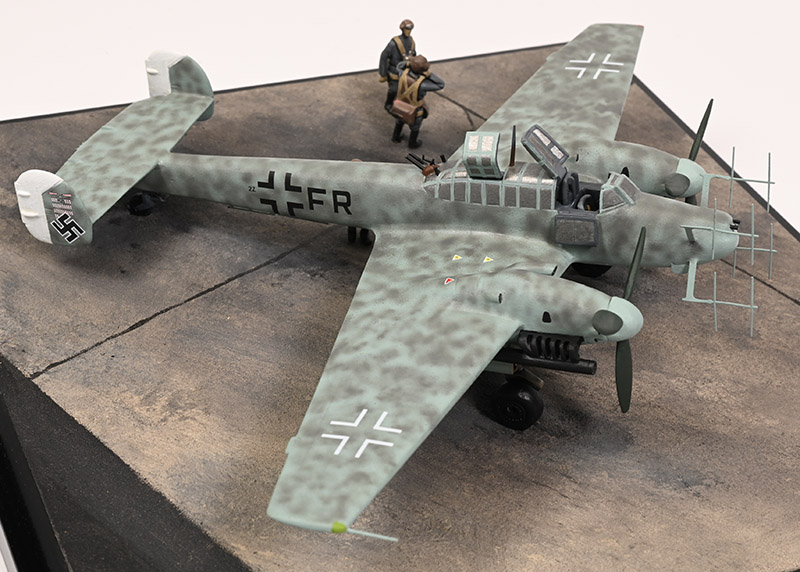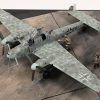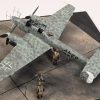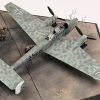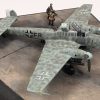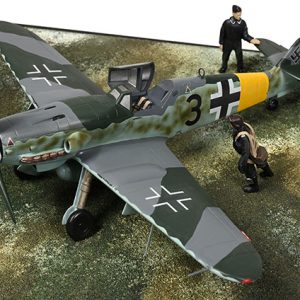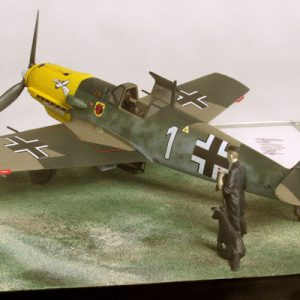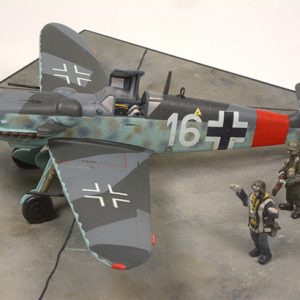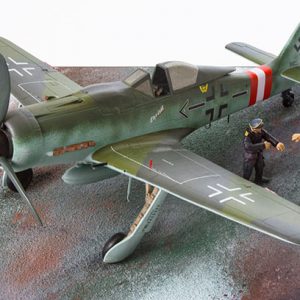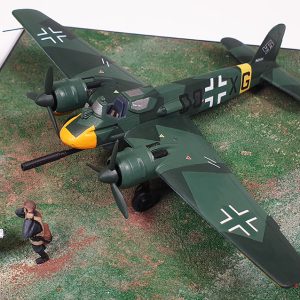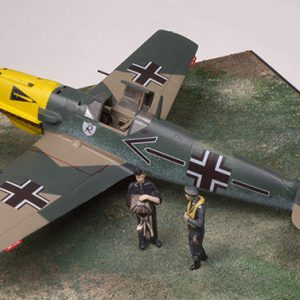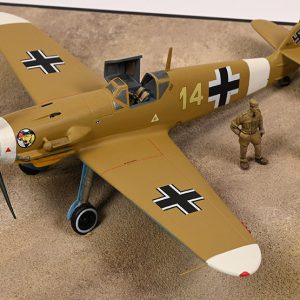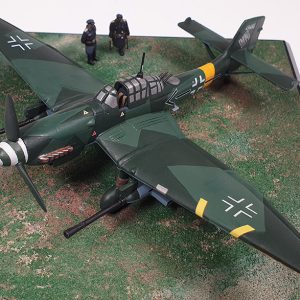Messerschmitt Bf 110 G-4, Werknummer W.Nr. Unknown, 2Z+FR
3./NJG 6, Hauptmann Wilhelm Johnen, Neubiberg, Germany, Spring 1945
Although Germany’s leadership were convinced that the war they were about to launch in 1939 would be fought on and above the territory of other nations, British bombs began falling on the Reich within days of the outbreak of hostilities. RAF Bomber Command’s change in strategy from diurnal to nocturnal operations in late 1939, following unacceptable losses during daytime sorties, created a corresponding need for the Luftwaffe to develop an effective night fighter defence force.
In July 1940, Oberst Josef Kammhuber was appointed to oversee establishment of the first night fighter unit, Nachtjagdgeschwader (NJG) 1. Kammhuber’s initial crews were recruited from the day fighter units of the Zerstörergeschwader at a time when their Messerschmitt Bf 110 C twin engine aircraft were found wanting in the bomber escort role. In spite of its formidable forward firepower, the Messerschmitt Bf 110 C’s lack of agility in the air made it short on performance when matched against the RAF’s redoubtable single-seat fighters. However, once reallocated to night fighting duties, the Messerschmitt Bf 110 found its metier, and played a distinguished role in the defence of the Third Reich. Since efforts to replace the Bf 110 with more advanced aircraft such as the Me 210 and Me 410 were ineffective, improved variants of the Bf 110 persisted in operational service until the end of the war.
The Messerschmitt Bf 110 G variant of Messerschmitt’s design was the first type specifically intended for the night fighter role. It entered production in June 1942. In comparison to the Bf 110 C, the night fighting G4 variants had more powerful DB605B-1 engines and marginally re-engineered structure and systems. The addition of radar aerials and night fighting equipment inevitably resulted in a loss of aerodynamic performance. Nonetheless the Messerschmitt Bf 110 G presented the Nachtjagdgeschwader with an outstanding weapon to combat RAF bomber command’s offensive during 1942-45.
Bf 110 G’s were arrayed with varying types of radar systems (such as FuG 202, FuG 212, FuG 220 SN-2 variations of Lichtenstein, and FuG 218 Neptun) and armed with powerful forward firing canon and machine guns, supplemented in some cases by the vertically inclined Schräge Musik (Jazz Music) installation with paired MK108 canons projecting obliquely through the rear of the canopy. This upward firing weapon was particularly effective in targeting the unprotected bellies of RAF bomber command’s aircraft and it is estimated to have been used in half of all the night fighter attacks towards the end of the war.
Wilhelm Johnen flew his first operational night fighter mission on 11th July 1941 during which they intercepted a Wellington but failed to shoot it down. Johnen’s first victory came on 26th March 1942. Johnen intercepted a Vickers Wellington northwest of Wesel. It was part of a force of 104 Wellingtons and 11 Short Stirlings that attacked Essen. Johnen’s first victory was probably Wellington X3589, KO-F, from No. 115 Squadron RAF. Sergeant Harry Taylor and his crew were killed. Three years later, with the war entering its last phase, Johnen’s score now stood at 33. He was promoted Hautpmann and awarded the Knight’s Cross of the Iron Cross (Ritterkreuz des Eisernen Kreuzes) on 29th October 1944. Johnen was appointed Gruppenkommandeur (group commander) of 3. Gruppe of NJG 6, which was based in Germany, On the night of the 15/16th March 1945 Johnen shot down his 34th and final bomber, a Lancaster southeast of Würzburg at 02:45.
Messerschmitt Bf110 G-4, 7./NJG6 was among the aircraft found by the Allies in the spring of 1945 in Neubiberg. Despite wearing the codes of 7. Staffel, the aircraft in question was the personal mount of the CO of III./NJG 6, Hauptmann Wilhelm Johnen. The aircraft, coded 2Z+FR, was his last wartime aircraft, from a later series production block. 2Z+FR was equipped with the FuG 220 SN-2d “Hirschgeweih” (deer antlers) antenna system with the dipoles angled at 45 degrees, exhausts of the Eberspacher type, and equipped with the Schräge Musik cannon arrangement. The camouflage scheme consisted of RLM 76 on the bottom and side surfaces with RLM 75 snaking on upper fuselage surfaces. In wartime photos the wing upper surface colour appears to be a single tone RLM 75. 2Z+FR’s vertical fins carried a meticulously rendered Knight’s Cross, with 32 bars denoting kills. Four of which are obscured by the Knight’s Cross motif. In total, Wilhelm Johnen claimed 34 kills, the last of which was gained on the night of 15/16th March, 1945.


